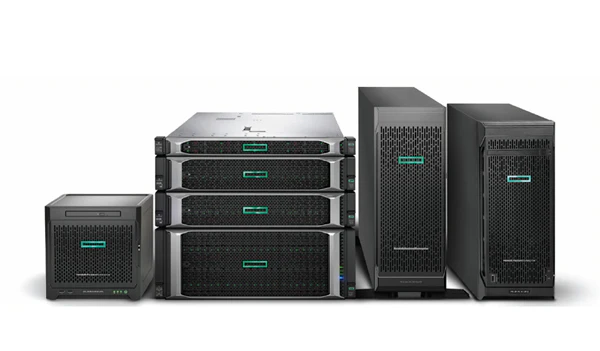What are the application scenarios of CTO server?
CTO servers, designed for tailored performance and scalability, are versatile across industries. Here’s a detailed breakdown of their application scenarios based on technical architectures and real-world implementations.

Main Application Scenarios of CTO Server
1. Software Development & Innovation
CTO servers streamline the entire software lifecycle, from development to deployment. They integrate containerization technologies (e.g., Docker, Kubernetes) to create standardized environments, reducing setup time from days to minutes . For instance, startups building mobile apps use CTO servers to manage centralized project dashboards, track dependencies, and automate CI/CD pipelines. This ensures code changes are tested and deployed in real-time, as seen in SaaS companies achieving 10x faster release cycles . Additionally, version control integration (e.g., Git) and secure code repositories enable teams to collaborate efficiently while maintaining audit trails for compliance .
2. Enterprise Digital Transformation
Large enterprises leverage CTO servers to consolidate legacy systems and break down data silos. By integrating ERP, CRM, and supply chain platforms, CTO servers enable end-to-end process automation. For example, a manufacturing company reduced production delays by 30% by centralizing data from IoT sensors, production lines, and logistics systems . Financial institutions use CTO servers for real-time transaction processing, supporting up to 120,000 transactions per second with sub-millisecond latency, critical for high-frequency trading and fraud detection . The elastic scalability of CTO servers also helps manage peak loads, such as e-commerce platforms handling 800,000 concurrent users during flash sales .
3. Education & Training
CTO servers provide cloud-based coding environments that eliminate the need for local software installations. Schools and training institutions use them to deliver virtual labs for programming, data science, and cybersecurity courses. For instance, a vocational training program scaled to 2,500+ students by deploying AI-powered code analysis tools on CTO servers, reducing instructor workload by 50% . The multi-user collaboration features also enable group projects, where students simulate real-world scenarios like building a distributed database system .
4. Healthcare & Life Sciences
In healthcare, CTO servers support telemedicine platforms and medical imaging analytics. For example, a telehealth provider reduced diagnostic wait times from 48 hours to 2 hours by deploying AI-driven image recognition models on CTO servers . They also manage patient data securely, adhering to HIPAA and GDPR standards through encrypted storage and role-based access control. In pharmaceutical research, CTO servers accelerate drug discovery by simulating molecular interactions using high-performance computing clusters, cutting analysis time from months to weeks .
5. Edge Computing & IoT
CTO servers are critical for low-latency applications at the network edge. For example, smart factories use them to process sensor data in real-time, enabling predictive maintenance of machinery with 95% accuracy . In autonomous driving, CTO servers power vehicle-to-everything (V2X) communication, ensuring cars exchange safety data within milliseconds . Edge-deployed CTO servers also support smart cities, managing traffic lights and energy grids while reducing cloud dependency by 40% .
6. Financial Services
CTO servers excel in high-frequency trading and blockchain applications. A fintech startup achieved 99.97% risk-interception accuracy by deploying AI-driven fraud detection models on CTO servers . They also support cross-border payment systems, processing 12,000 transactions per second with end-to-end encryption . For wealth management, CTO servers enable robo-advisors to analyze market trends and generate personalized investment strategies in real-time .
7. Media & Entertainment
CTO servers optimize content delivery networks (CDNs) for streaming platforms. A video-sharing site reduced latency by 30% by deploying edge CTO servers with adaptive bitrate streaming, ensuring smooth playback even on low-bandwidth connections . They also support real-time collaboration tools, allowing remote teams to edit 4K videos simultaneously with version history tracking . In gaming, CTO servers host multiplayer online games, supporting 10,000+ concurrent players with sub-50ms latency .
8. Government & Public Sector
CTO servers underpin e-governance platforms, digitizing citizen services like tax filing and license applications. A regional government reduced processing times by 70% by deploying AI chatbots on CTO servers to handle 80% of routine inquiries . They also secure critical infrastructure, such as power grids and transportation systems, using zero-trust architecture and 24/7 threat monitoring .
9. Energy & Utilities
CTO servers enable smart grid management, analyzing real-time energy consumption data to optimize distribution. A utility company reduced peak demand by 15% by deploying predictive analytics models on CTO servers . They also support renewable energy integration, forecasting solar/wind output with 90% accuracy to balance grid stability .
10. Retail & E-Commerce
CTO servers enhance customer experience through AI-driven personalization. A retail giant increased conversion rates by 20% by deploying recommendation engines on CTO servers, analyzing 10+ million user interactions daily . They also manage inventory optimization, using real-time sales data to adjust stock levels and reduce overstocking by 30% . During flash sales, CTO servers auto-scale to handle 5x traffic spikes without downtime .
Key Advantages Across Scenarios
Customization: Tailored hardware (e.g., GPU clusters for AI) and software configurations meet specific workload demands .
Scalability: Elastic resource allocation ensures seamless handling of traffic surges, as seen in e-commerce and gaming .
Security: Built-in encryption and compliance features (e.g., ISO 27001) protect sensitive data in healthcare and finance .
Cost Efficiency: Reduced latency and optimized resource usage lower operational costs by 20–40% in industries like manufacturing and logistics .
In summary, CTO servers act as a unified digital hub, bridging business needs with technical capabilities across diverse sectors. Their adaptability, performance, and security make them indispensable for modern enterprises driving innovation and efficiency.



